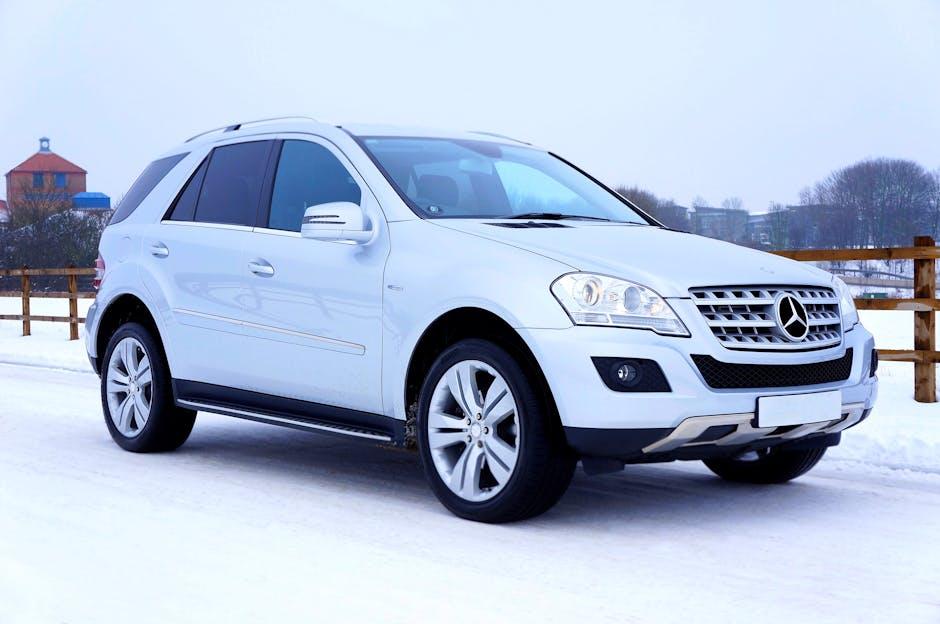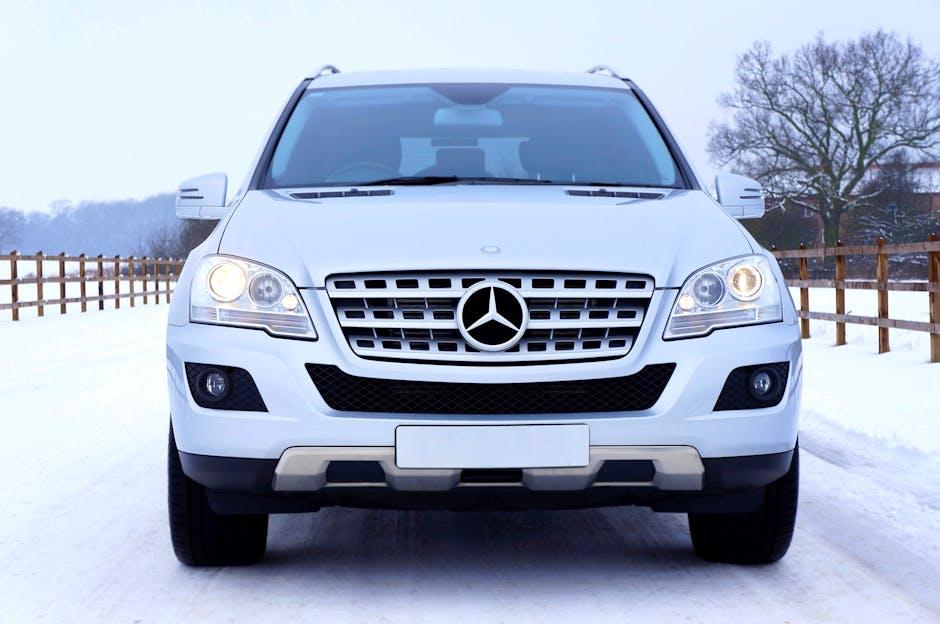When the first frost glistens on the morning grass and the roads whisper promises of ice and snow, the question of tires takes center stage for every driver. Choosing between winter tires and all-season tires isn’t just about convenience—it’s a decision that can redefine safety, performance, and peace of mind during the colder months. As temperatures drop and weather conditions shift, understanding the strengths and limitations of each tire type becomes essential. In this article, we’ll explore the subtle science and practical realities behind winter tires and all-season tires, helping you navigate the slippery crossroads with confidence and clarity.
Table of Contents
- Choosing the Right Tire for Your Climate and Driving Habits
- Understanding the Key Differences in Tire Design and Performance
- How Winter Tires Handle Ice and Snow Compared to All-Season Options
- Evaluating Cost Effectiveness and Longevity for Seasonal Use
- Safety Considerations When Switching Between Winter and All-Season Tires
- Making the Best Choice Based on Vehicle Type and Road Conditions
- Q&A
- In Summary

Choosing the Right Tire for Your Climate and Driving Habits
When selecting tires, understanding your local climate is crucial. If you live in an area with harsh winters, frequent snow, or icy roads, winter tires are designed to keep you safe and maintain traction in low temperatures. These tires feature specialized rubber compounds that remain flexible even in freezing conditions and have deeper tread patterns to dig into snow and slush. Conversely, if your winters are mild or you rarely encounter snow, all-season tires can offer a balanced performance throughout the year, blending tread patterns for both dry and wet conditions with moderate winter traction.
Your daily driving habits should also factor into your choice. Consider if you often take long highway trips, city commutes, or drive on back roads where road conditions can change quickly. Winter tires excel in stop-and-go traffic during snowy commutes, while all-season tires provide convenience for drivers seeking low maintenance and year-round usability. Below is a concise comparison to help clarify the main differences:
| Factor | Winter Tires | All-Season Tires |
|---|---|---|
| Performance in Snow/Ice | Excellent | Moderate |
| Durability in Warm Weather | Lower | High |
| Tread Longevity | Shorter | Longer |
| Cost | Higher (seasonal use) | Moderate (year-round use) |
- Severe cold and snow: Winter tires provide unmatched safety.
- Mixed climates: All-season tires offer versatility.
- Frequency of winter driving: Choose winter tires if you drive often in snowy conditions.

Understanding the Key Differences in Tire Design and Performance
When it comes to tire design, the differences between winter tires and all-season tires go far beyond just aesthetics. Winter tires are engineered with a softer rubber compound that remains pliable in freezing temperatures, allowing for better grip on ice and snow. Their tread patterns feature deeper grooves and additional siping—tiny slits in the tread blocks—that act like mini gripping edges, enhancing traction on slippery surfaces. This design ensures that winter tires can channel slush and water away efficiently, reducing the risk of hydroplaning in harsh weather conditions.
On the other hand, all-season tires are crafted for versatility and durability, with a rubber compound that balances performance in both warm and cold temperatures but doesn’t specialize in extreme conditions. Their tread is optimized for a comfortable ride, good handling, and moderate traction in dry, wet, or light snow scenarios. You’ll often notice a simpler groove pattern and fewer siping details, which contributes to quieter road noise and longer tread life during mild weather. Here’s a quick comparison to illustrate key features:
| Feature | Winter Tires | All-Season Tires |
|---|---|---|
| Rubber Compound | Soft, flexible at low temps | Harder, media-temp optimized |
| Tread Pattern | Deep grooves, extensive siping | Moderate grooves, minimal siping |
| Traction | Excellent on snow & ice | Good on dry & light snow |
| Noise Level | Moderate | Lower, quieter ride |
| Tread Life | Shorter due to softer rubber | Longer, balanced performance |
- Winter tires excel in safety and control during freezing, snowy months.
- All-season tires offer convenience and cost-efficiency for moderate climates.
- Your choice should depend on how extreme your local winter conditions are.

How Winter Tires Handle Ice and Snow Compared to All-Season Options
Winter tires are specifically engineered to excel in cold weather, snowy roads, and icy conditions. Their rubber compounds remain flexible at temperatures below 45°F, allowing them to maintain grip rather than stiffening like all-season tires. This flexibility, combined with deep treads and unique siping patterns, helps winter tires cut through snow and slush, channeling water away to prevent hydroplaning. As a result, they provide superior traction, shorter stopping distances, and enhanced handling when snow and ice transform roads into hazards.
In contrast, all-season tires aim to offer a balance of performance across a range of conditions but inevitably fall short in extreme winter weather. Their harder rubber compounds become less pliable in freezing temperatures, limiting grip. While they perform adequately on dry and wet roads, their tread design isn’t optimized for snow and ice, making traction less reliable. Here’s a quick comparison to highlight these differences:
| Feature | Winter Tires | All-Season Tires |
|---|---|---|
| Rubber Flexibility | Remains soft and pliable below 45°F | Becomes hard and stiff in cold |
| Tread Design | Aggressive with deep grooves & siping | Moderate, designed for varied conditions |
| Ice Traction | Excellent grip with specialized tread | Limited grip, prone to slipping |
| Snow Handling | Superior ability to channel snow & slush | Can struggle to maintain traction |

Evaluating Cost Effectiveness and Longevity for Seasonal Use
When considering cost effectiveness for seasonal tires, it’s essential to weigh both the initial purchase price and the long-term value they provide. Winter tires, typically more expensive upfront, are engineered with specialized rubber compounds and tread designs that enhance performance and safety in cold, icy conditions. However, their longevity can be limited if used year-round, leading to faster wear and eventual replacement costs. All-season tires, while more affordable and versatile, may not deliver the same level of traction in severe winter weather but tend to last longer when used consistently across mild seasons.
Delving deeper, here’s a quick comparison that captures the essence of their cost-benefit balance:
| Tire Type | Average Lifespan | Typical Cost | Ideal Use |
|---|---|---|---|
| Winter Tires | 3-5 Seasons (when used seasonally) | $$$ | Snow, Ice & Cold Conditions |
| All-Season Tires | 5-7 Seasons | $$ | Year-Round, Mild Weather |
- Winter tires: Require storage during warmer months to maximize lifespan.
- All-season tires: Offer convenience and reduced replacement frequency.
- Long-term savings: Depend on how well the tires are matched to seasonal demands.

Safety Considerations When Switching Between Winter and All-Season Tires
Switching tires isn’t just about swapping rubber; it’s a crucial safety decision that impacts your vehicle’s performance and your peace of mind. When transitioning between winter and all-season tires, it’s important to consider the condition of your tires. Worn tires lose their ability to maintain traction, especially on slick, icy roads. Checking the tread depth and ensuring your tires are free from damage can prevent dangerous situations. Additionally, pay attention to tire pressure, as it fluctuates with temperature changes and directly influences handling and fuel efficiency.
Another often overlooked aspect is the timing of the swap. Switching tires too early or too late in the season can compromise safety. Cold-weather conditions demand winter tires’ superior grip, but once temperatures stabilize above 45°F (7°C), all-season tires become more suitable. Below is a quick guide to help you decide when to switch, based on temperature ranges and road conditions:
| Temperature Range | Recommended Tire Type | Safety Tip |
|---|---|---|
| Below 32°F (0°C) | Winter Tires | Maximize traction on ice and snow |
| 32°F – 45°F (0°C – 7°C) | Prefer Winter Tires | Prepare for frost and variable conditions |
| Above 45°F (7°C) | All-Season Tires | Enhance wear life and fuel efficiency |

Making the Best Choice Based on Vehicle Type and Road Conditions
Choosing the right tires hinges greatly on the vehicle you drive and the typical road conditions you encounter during winter months. For smaller, lighter vehicles such as compact cars or sedans, winter tires offer enhanced traction on icy or snowy streets, thanks to their specialized rubber compounds and tread patterns. On the other hand, SUVs and pickup trucks, which are generally heavier and often equipped with all-wheel or four-wheel drive, might find that all-season tires meet their needs adequately when roads are mostly clear but occasionally slick.
Consider these factors to help tailor your tire choice:
- Average snowfall: Frequent heavy snowfall favors winter tires, while mild winter climates might allow all-season tires to suffice.
- Driving style: Aggressive or emergency driving benefits from the superior grip of winter tires.
- Road surface: Urban streets cleared regularly versus rural or mountainous roads with persistent ice or snow.
| Vehicle Type | Recommended Tire | Ideal Road Condition |
|---|---|---|
| Compact Car | Winter Tires | Snowy, Icy Urban Streets |
| SUV / Pickup | All-Season Tires | Cleared Roads, Light Snow |
| Luxury / Performance Cars | Winter Tires | Icy Roads, Cold Temperatures |
Q&A
Q&A: Winter Tires vs. All-Season Tires – What’s Best for You?
Q1: What are the main differences between winter tires and all-season tires?
A1: Winter tires are specially engineered with a unique rubber compound that stays flexible in freezing temperatures, plus deep tread patterns to grip snow and ice. All-season tires, on the other hand, offer moderate performance year-round, balancing tread wear and road traction without excelling in harsh winter conditions.
Q2: Why might winter tires be better in cold weather?
A2: When temperatures drop below 45°F (7°C), winter tires remain soft and pliable, improving contact with icy or snowy surfaces. This enhances braking, steering, and overall control, which all-season tires typically struggle with as their rubber hardens in the cold.
Q3: Can all-season tires handle light snow?
A3: Yes, all-season tires can manage light snow and occasional cold days fairly well, making them a decent choice for mild climates. However, they won’t provide the same level of safety or performance as winter tires in more challenging winter weather.
Q4: Are winter tires only necessary for snowy regions?
A4: Not necessarily. Even in areas without heavy snowfall, icy roads can be dangerous, and winter tires improve traction on ice and slush. If you regularly face freezing temperatures, winter tires can boost safety regardless of snow accumulation.
Q5: How do winter tires affect fuel economy?
A5: Winter tires often have higher rolling resistance due to their aggressive tread patterns, which can cause a slight decrease in fuel efficiency compared to all-season tires. This is a trade-off for enhanced safety on winter roads.
Q6: Should I use all-season tires year-round to avoid swapping?
A6: While convenient, using all-season tires year-round means you sacrifice optimal performance—especially in winter. Winter tires provide superior handling when it’s cold, so many experts recommend switching twice a year for safety and tire longevity.
Q7: What about tire wear—do winter tires wear out faster?
A7: Yes, winter tires tend to wear faster on warm, dry pavement because their softer rubber isn’t designed for these conditions. Using winter tires only during the colder months helps maximize their lifespan.
Q8: How can I decide which tires are best for me?
A8: Consider your local climate, driving habits, and safety priorities. If winters are harsh and slippery, winter tires are the safer bet. For mild climates with occasional cold snaps, quality all-season tires might suffice. Ultimately, your peace of mind on the road should guide your choice.
By understanding these key points, you can make an informed decision that keeps your journeys safe and smooth throughout the seasons.
In Summary
As the cold months roll in and roads turn from familiar to unpredictable, the choice between winter tires and all-season tires becomes more than just a matter of preference—it’s a decision that directly impacts safety, performance, and peace of mind. While all-season tires offer versatility and convenience, winter tires bring specialized grip and confidence when temperatures drop and snow blankets the streets. Ultimately, understanding your driving habits, climate conditions, and priorities will guide you toward the tire that best suits your journey. So whether you opt for the adaptable all-season or the dedicated winter warrior, remember: the right tires are your car’s best companion on every twist, turn, and frozen mile ahead.

